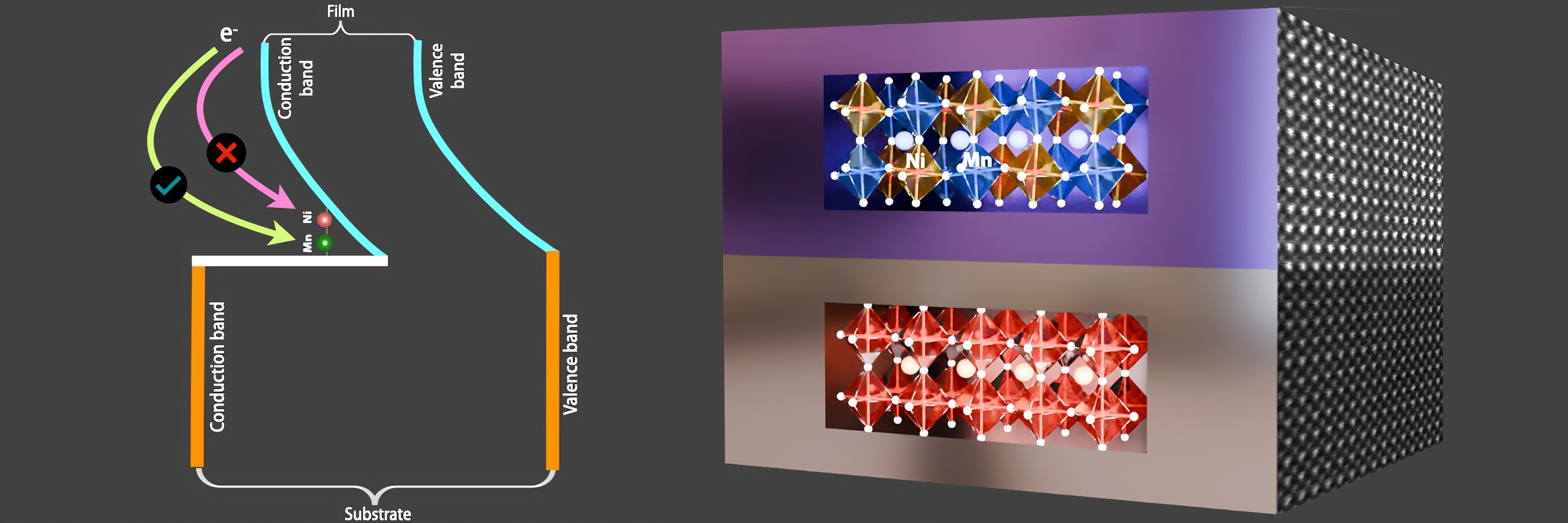Site-selective polar compensation in quantum heterostructures

Image: Nandana Bhattacharya, Manav Beniwal, Srimanta Middey
When two dissimilar semiconductors are sandwiched to form a heterostructure, an electrical charge mismatch at the interface can create what is called a polarity mismatch. If left unchecked, this can lead to a problematic buildup of voltage. Thankfully, materials often have clever ways to fix this, which can surprisingly give rise to entirely new and useful properties at the interface. Such “polarity compensation” has been studied in standard semiconductors since the 1970s, and has led to many advances in every-day electronics.
Historically, researchers found that atoms at the interface would often rearrange themselves to balance the electrical charges in these simpler materials. However, in more complex quantum materials, especially semiconducting/insulating oxides containing transition metals like iron, nickel and manganese, new ways of compensation emerged. Because transition metals can easily change their valency state, the electrons themselves can move around, leading to exciting properties, such as the interface becoming metallic, superconducting, or magnetic.
Studies on the compensation in simpler semiconductors missed a crucial factor: how strongly electrons repel each other. This concept, known as “electron correlation”, is key for various exotic properties in complex oxides but was less of a concern in traditional semiconductors.
In recent studies, researchers at the Department of Physics, IISc, led by Srimanta Middey’s group and collaborators explored the heterostructure of a double perovskite oxide called Nd2NiMnO6(hosting two TM cations), grown on SrTiO3 – a platform offering polarity mismatch. In bulk form, Nd2NiMnO6 is a ferromagnetic insulator (FI). FIs are rapidly emerging as promising materials for advanced, energy-efficient spintronic devices.
Combining experiments and theoretical calculations, the team show a site-selective polar compensation occurring explicitly at the Mn site, leaving the Ni sites inert. They further show that such surprising selectivity is directly associated with their contrasting correlation energy scales. This study paves way for designer doping strategies in complex oxides through interface engineering, rather than conventional chemical doping and electrostatic gating.
REFERENCES:
Bhattacharya N, Sen A, Qu K, Sinha A, Patel RK, Kumar S, Zhang J, Mandal P, Joshi SC, Ojha SK, Maity J, Zhang Z, Zhou H, Rodolakis F, Shafer P, Klewe C, Freeland JW, Yang Z, Waghmare U, Middey S, Site-selective polar compensation of Mott electrons in a double perovskite heterointerface, Physical Review Letters (2025).
https://journals.aps.org/prl/abstract/10.1103/PhysRevLett.134.176201
Bhattacharya N, Patel RK, Kumar S, Mandal P, Maity J, Klewe C, Zhang Z, Zhou H, Middey S, Interfacial reconstruction effects in insulating double perovskite Nd2NiMnO6/SrTiO3 and Nd2NiMnO6/NdGaO3 thin films, Physical Review B (2025).
https://journals.aps.org/prb/accepted/10.1103/1qzc-j65h
LAB WEBSITE:
https://physics.iisc.ac.in/~srimanta/




